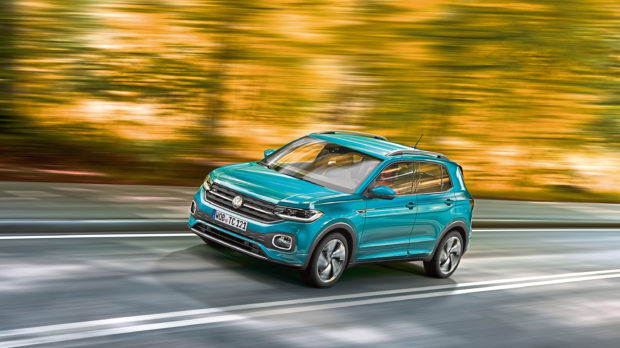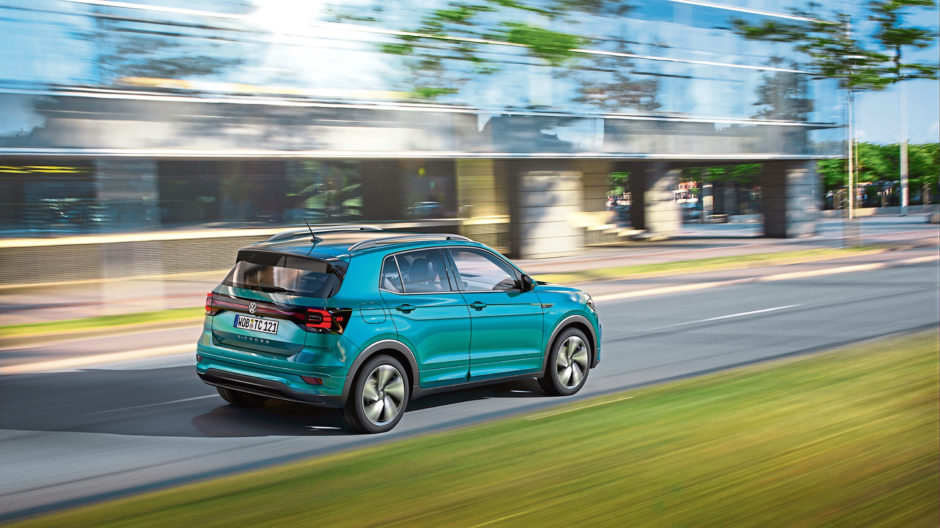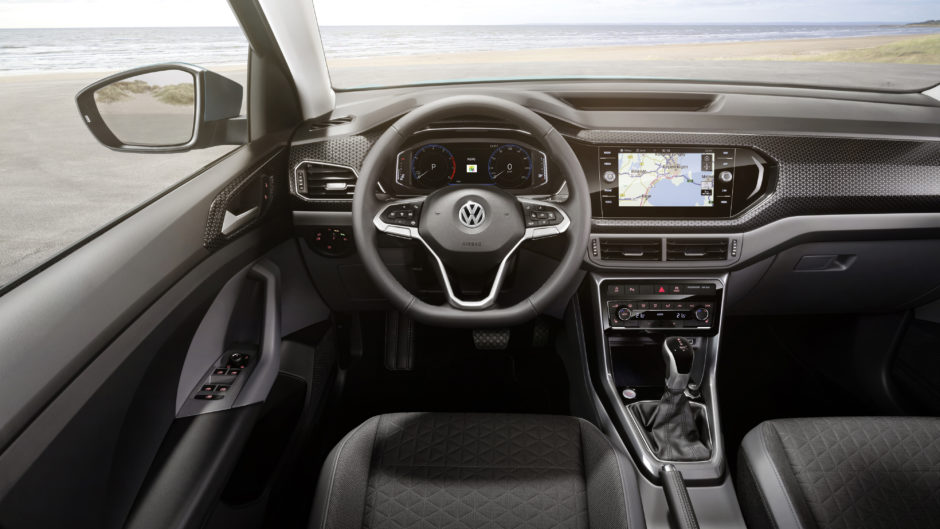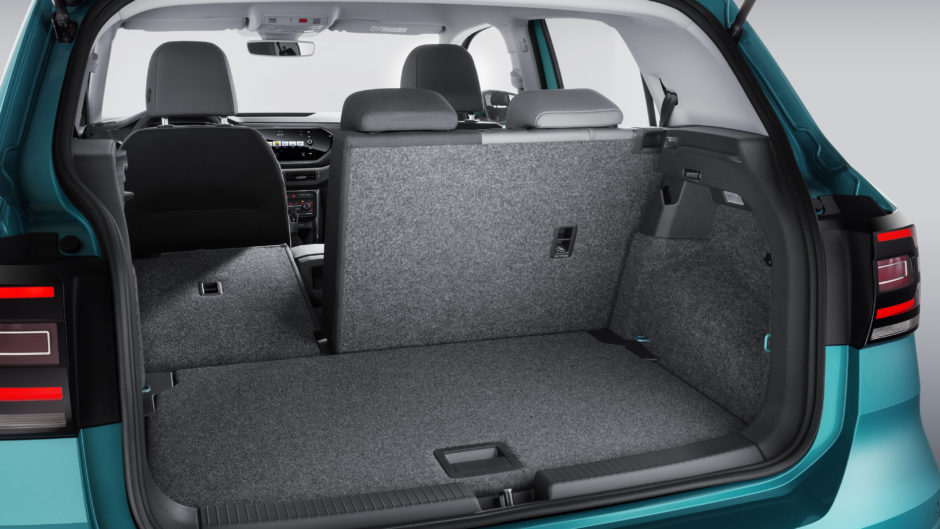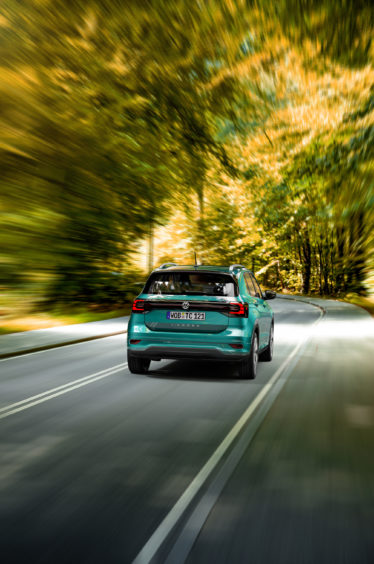Volkswagen has lifted the wraps from the newest and smallest model in its SUV lineup.
The T-Cross is a compact SUV that will go head to head against the Nissan Juke when it goes on sale next year.
The car is 127mm shorter than VW’s previous smallest SUV, the T-Roc, and will be comparable in size to the Seat Arona and Audi Q2.
It stands 97mm taller than the Volkswagen Polo but its styling makes it appear even higher.
Overall, the T-Cross measures 4.11 metres long and the wheelbase has been stretched to 2.56 metres over the Polo it’s based on to increase passenger space.
VW says that despite its diminutive size it “is comparatively generous, allowing a spacious interior with enough room for five people.”
The rear seat can be adjusted by up to 14cm which means it can offer more legroom or boot space depending on the needs of the passengers.
The luggage space itself offers between 385 and 455 litres of space which is expandable up to 1,281 litres when the rear seats are folded down.
The car will be available with Volkswagen’s 1.0-litre turbocharged TSI engine from launch, in 95hp and 115hp variants, both fitted with petrol particulate filters.
Five and six-speed manuals will be available, along with a seven-speed DSG automatic.
Perhaps not surprisingly, a diesel variant is not in current plans for the UK launch – but a 1.6-litre TDI is available in mainland Europe.
Also unsurprisingly, the T-Cross will be front wheel drive only, with their being little appetite for four-wheel drive in cars of this type.
The interior is dominated by technology – a large eight-inch touchscreen fills the dashboard, along with a digital instrument panel.
Four USB ports are fitted – two in the front and two in the back, along with a 300w Beats Audio optional sound system with subwoofer.
Keyless entry and wireless inductive phone charging are further options.
Safety is another strong suit. All models come with Front Assist area monitoring system with Pedestrian Monitoring and City Emergency Braking System, the lane keeping assistant Lane Assist, Hill Start Assist, a proactive occupant protection system, and Blind Spot Detection lane change assist system with the integrated Rear Traffic Alert.
UK models will be offered in S, SE, SE-L and R-Line trim levels, with pricing expected to start around £17,000.
Fuel economy and CO2 figures aren’t available yet but should be released along with full pricing details over the next month or two.
Order books open in February and the first customers should get their T-Crosses in the spring.
jmckeown@thecourier.co.uk
